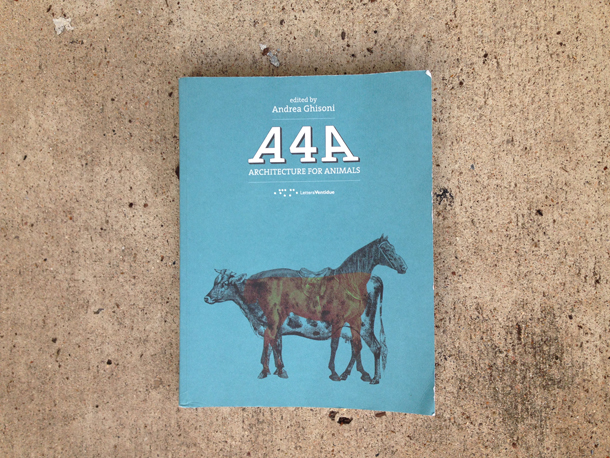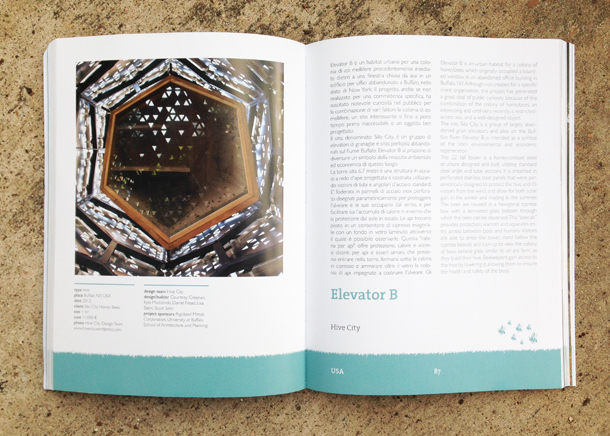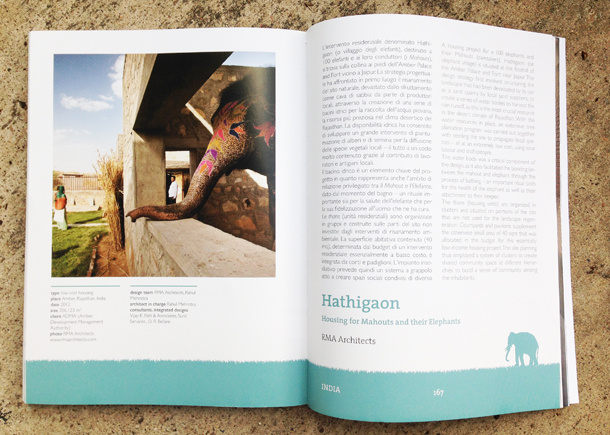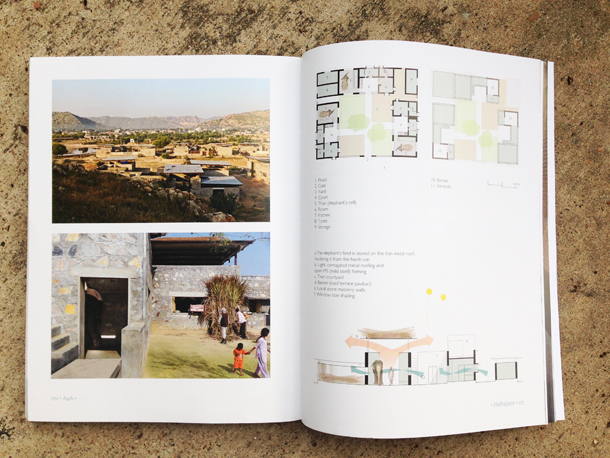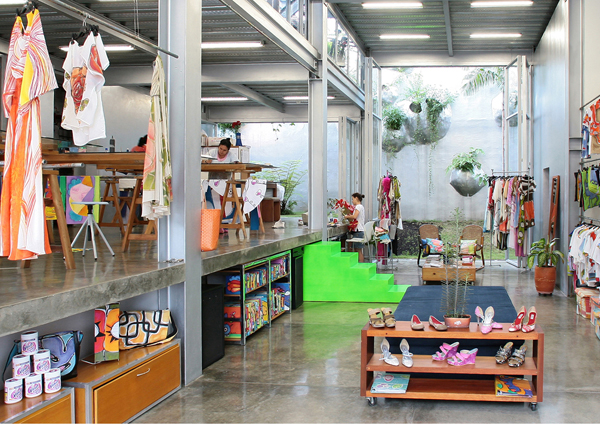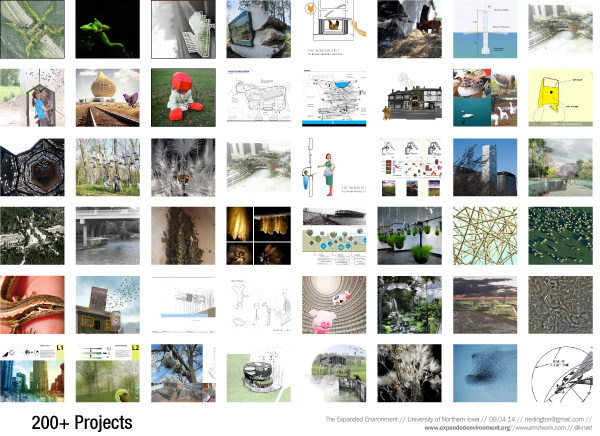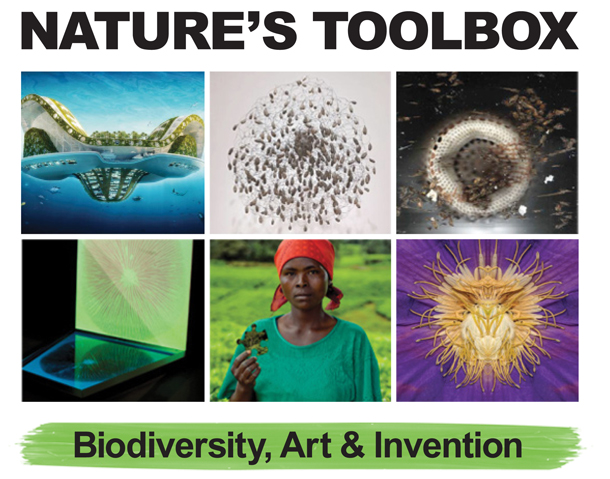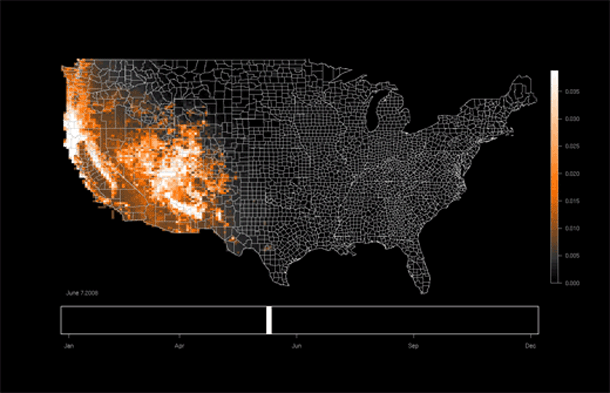A4A
Architecture for Animals
Edited by Andrea Ghisoni
Lettera Ventidue Press 2014
Architecture for Animals is a short and contemporary snap-shot of mostly European animal shelters. The author, a young architect living in Italy, has assembled a diverse array of structures built by humans explicitly for non-human use. Barns, sheds, coops, ranch-houses and stables, even a fishery, are assembled and exhibited for their architectural distinction and unique programmatic and design challenges (i.e. designing for an non-human subject). It’s an interesting collection of projects, many of which are beautiful examples of architectural design.
However, when viewed towards the more profound aspirations of illustrating cross-species design practices, or an in-depth look at design for non-human subjects the collection falls terribly short. With the exception of a few projects, we are left with, and perhaps we shouldn’t be surprised, exactly what is advertised, architecture built for animals.
In the introduction the author illustrates the challenge. “It is a complex issue because it may be difficult to tell a space conceived for the well-being of the animals from a mere compositional exercise… Since animals have no inherent ability to read and perceive closed spaces, they can only adapt to the environmental conditions we have designed for them.”
We would certainly agree that it’s a complex issue, but we would also suggest deeper reflection. Additionally, the second statement is simply not true. The work of Temple Grandin and many others (one imagines almost every animal ethologist and behaviorist) would demonstrate the contrary. Moreover this assertion strikes at the heart of challenge that the Expanded Environment attempts to overcome. This statement is reflets exactly the limited world-view that we would hope designers of today would avoid. Rather than to understand the spatio-sensorial particularities of a given non-human agent, the architect defaults to historical or purely aesthetic design decisions.
Despite the limitations of the author however, there are several interesting projects within the collection. We’ve noticed the Hive City Bat Tower project is well featured and documented and we’re very intrigued by the Hathigaon Project by RMA Architects for Mahouts and their Elephants.
In summation, Architecture for Animals is just as described; a collection of contemporary structures designed for animal use. Aspirations above that are to be found elsewhere.

